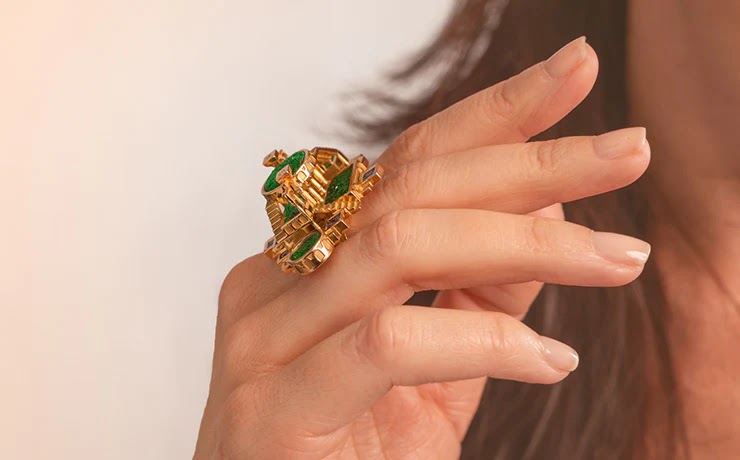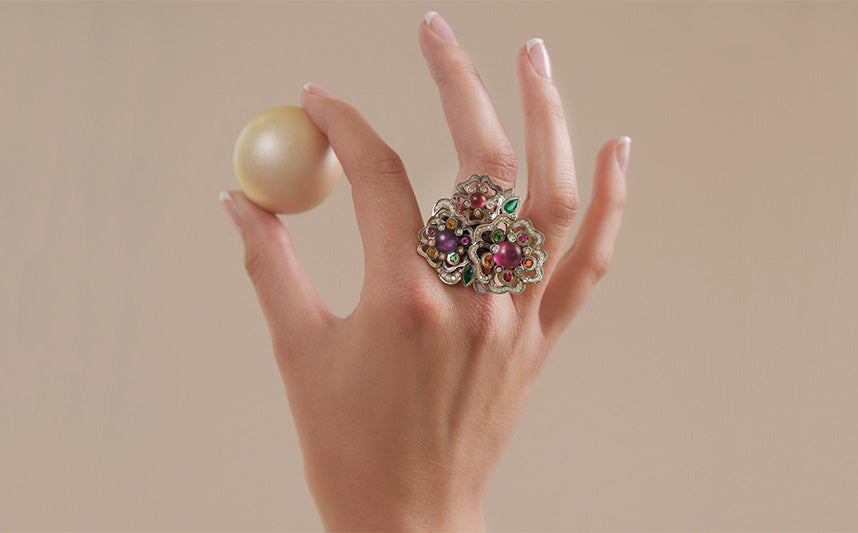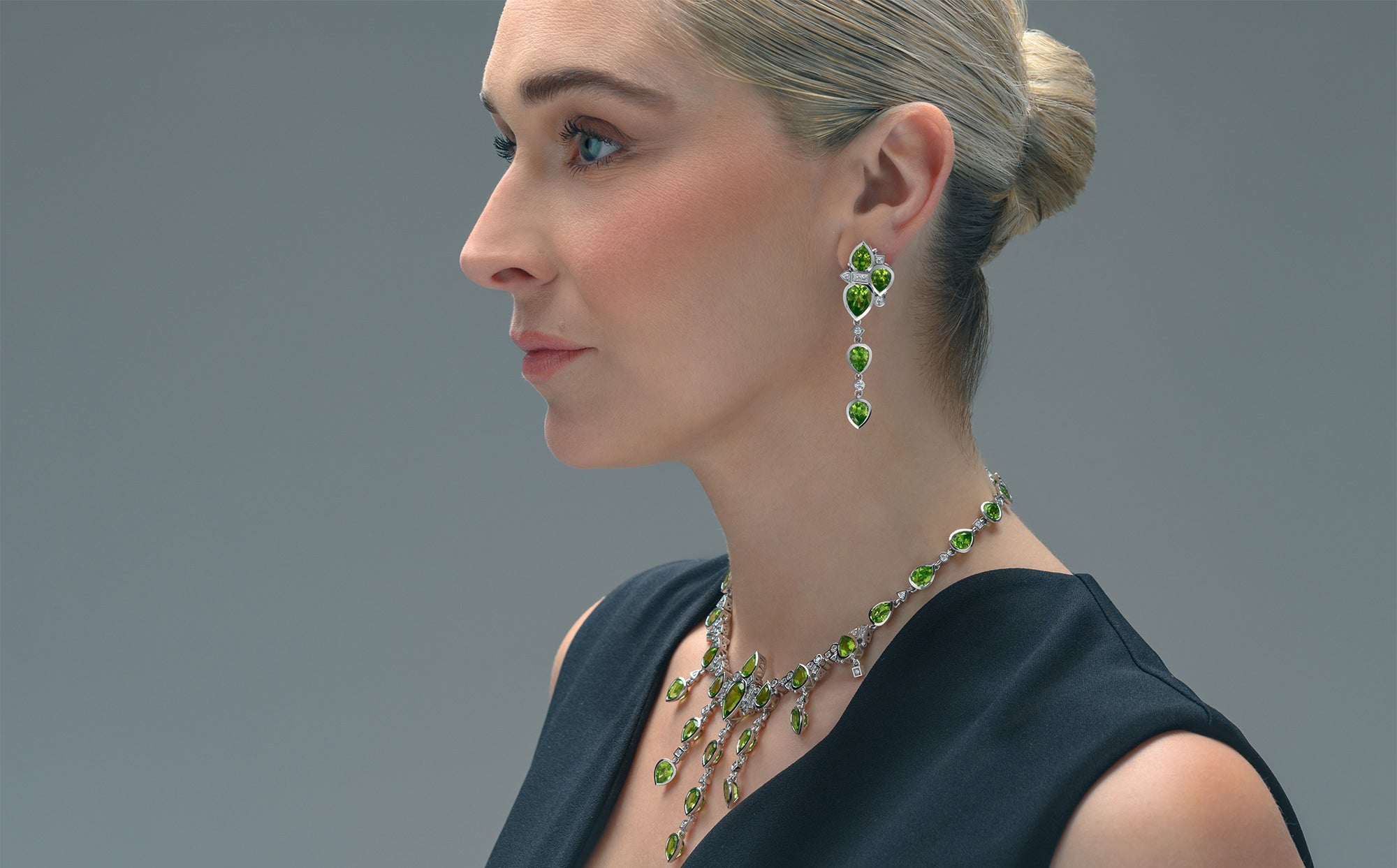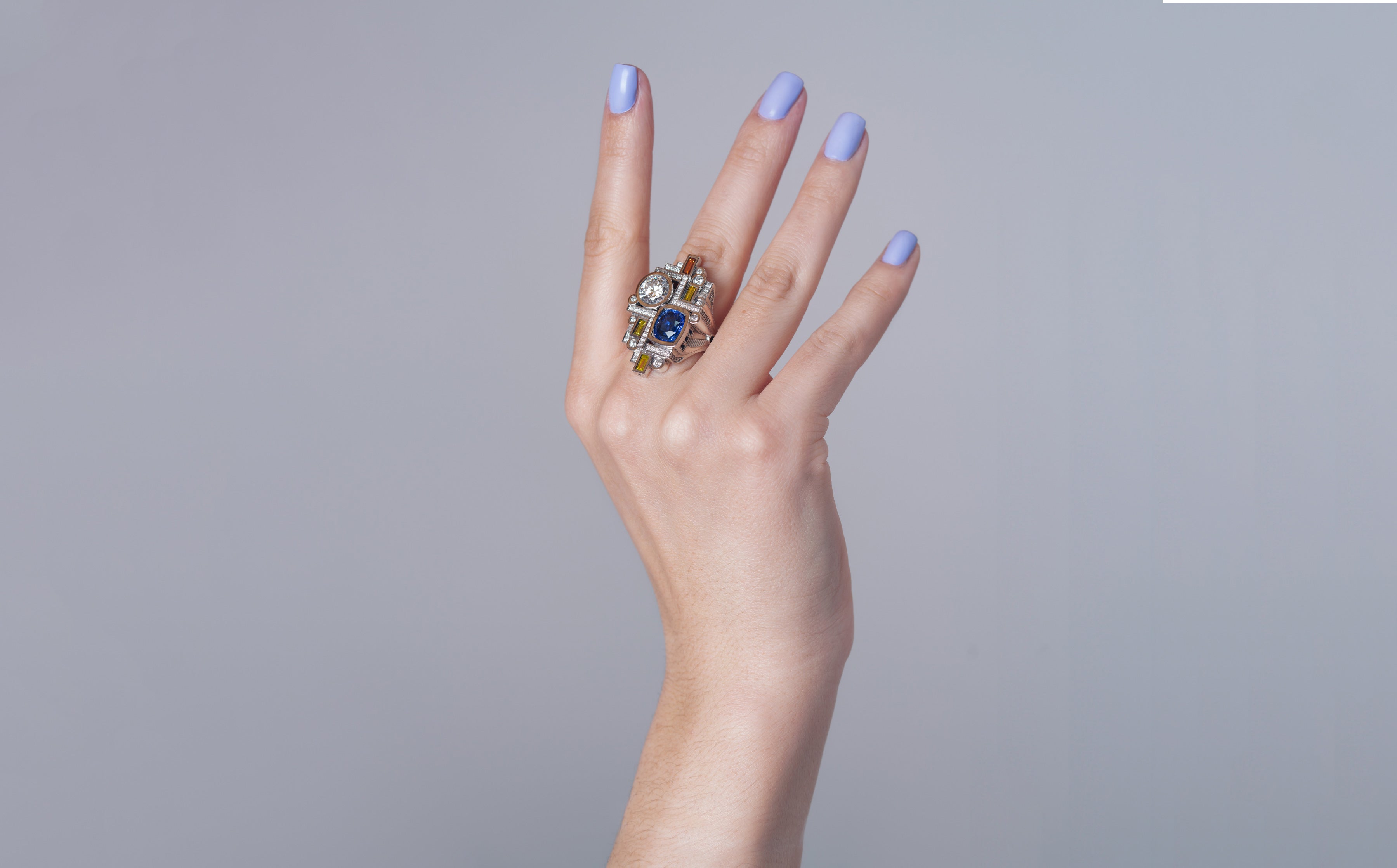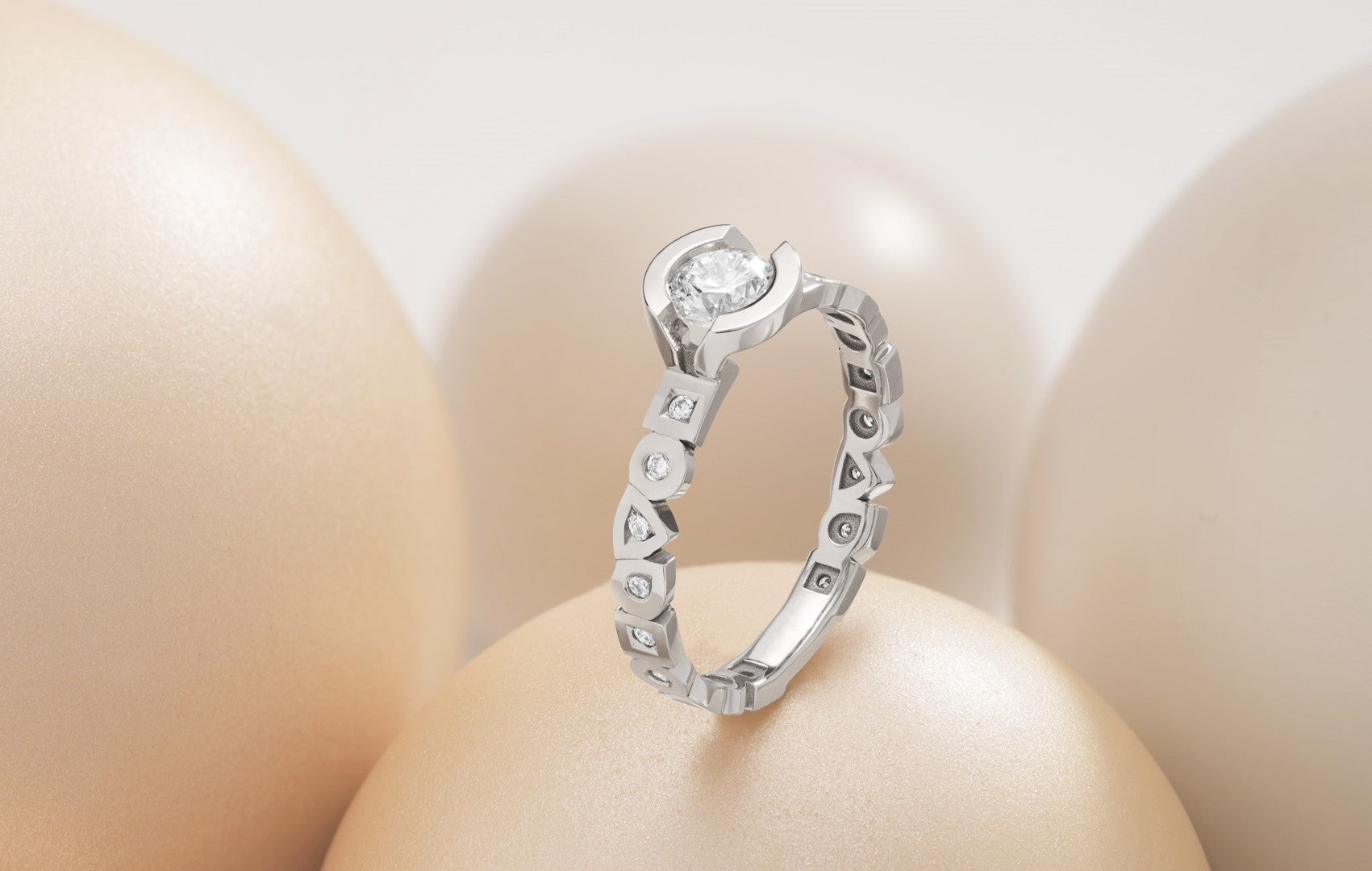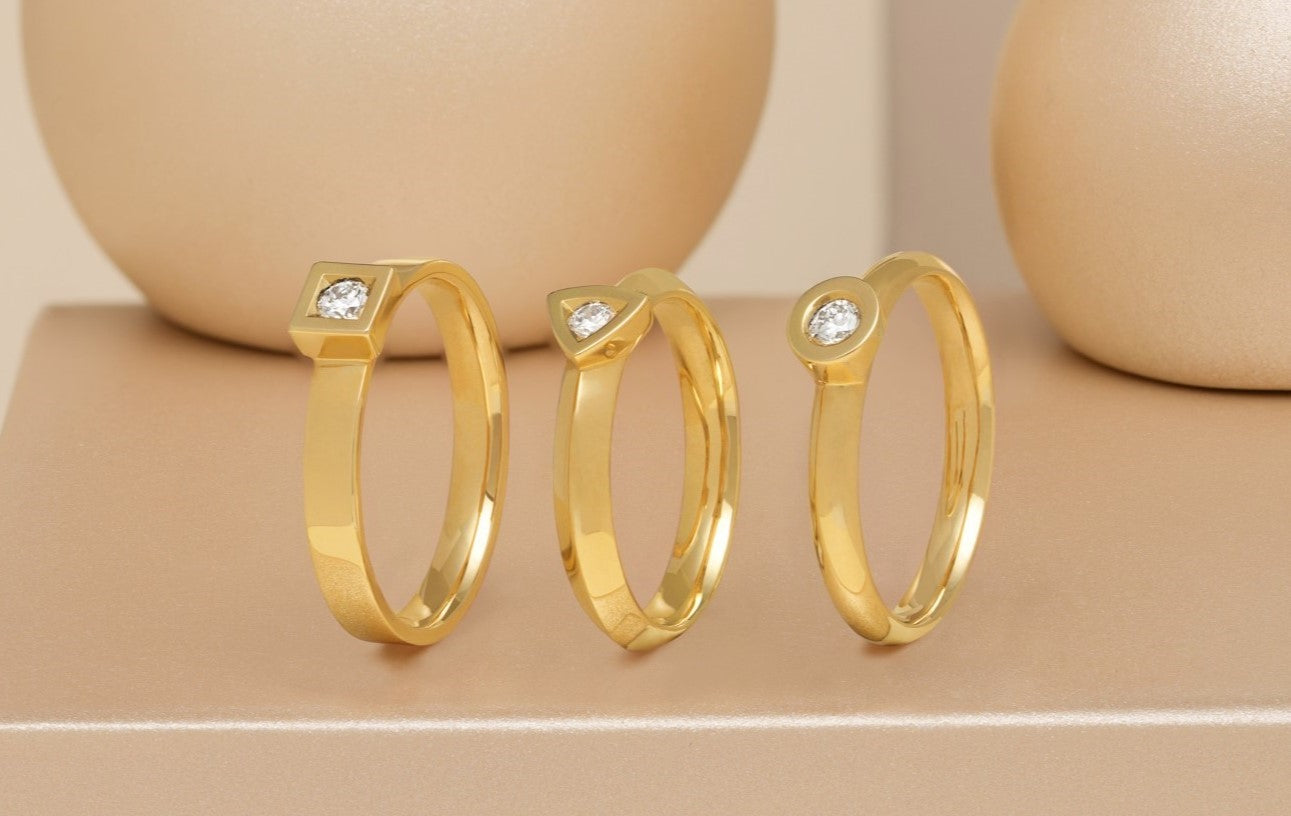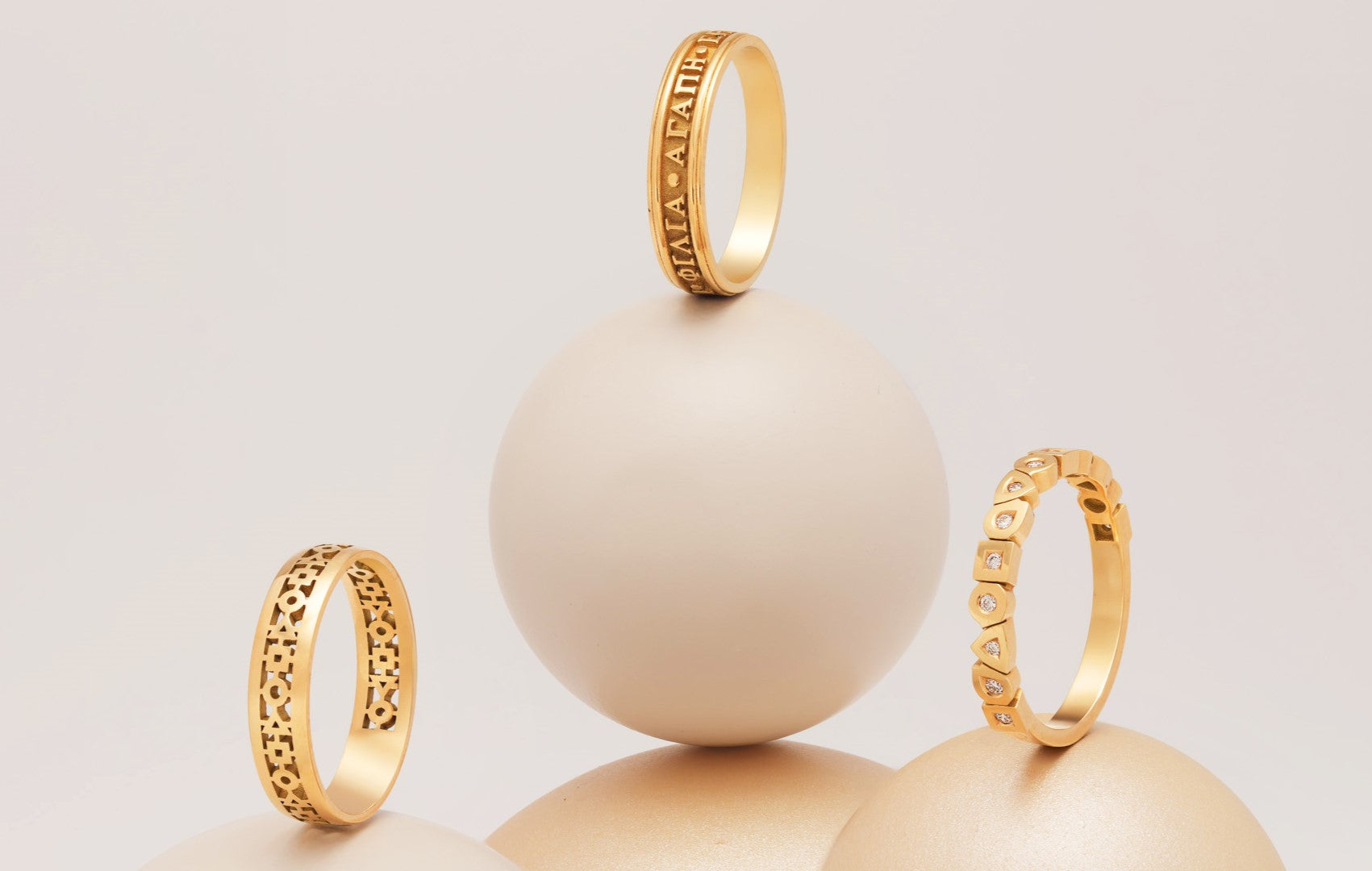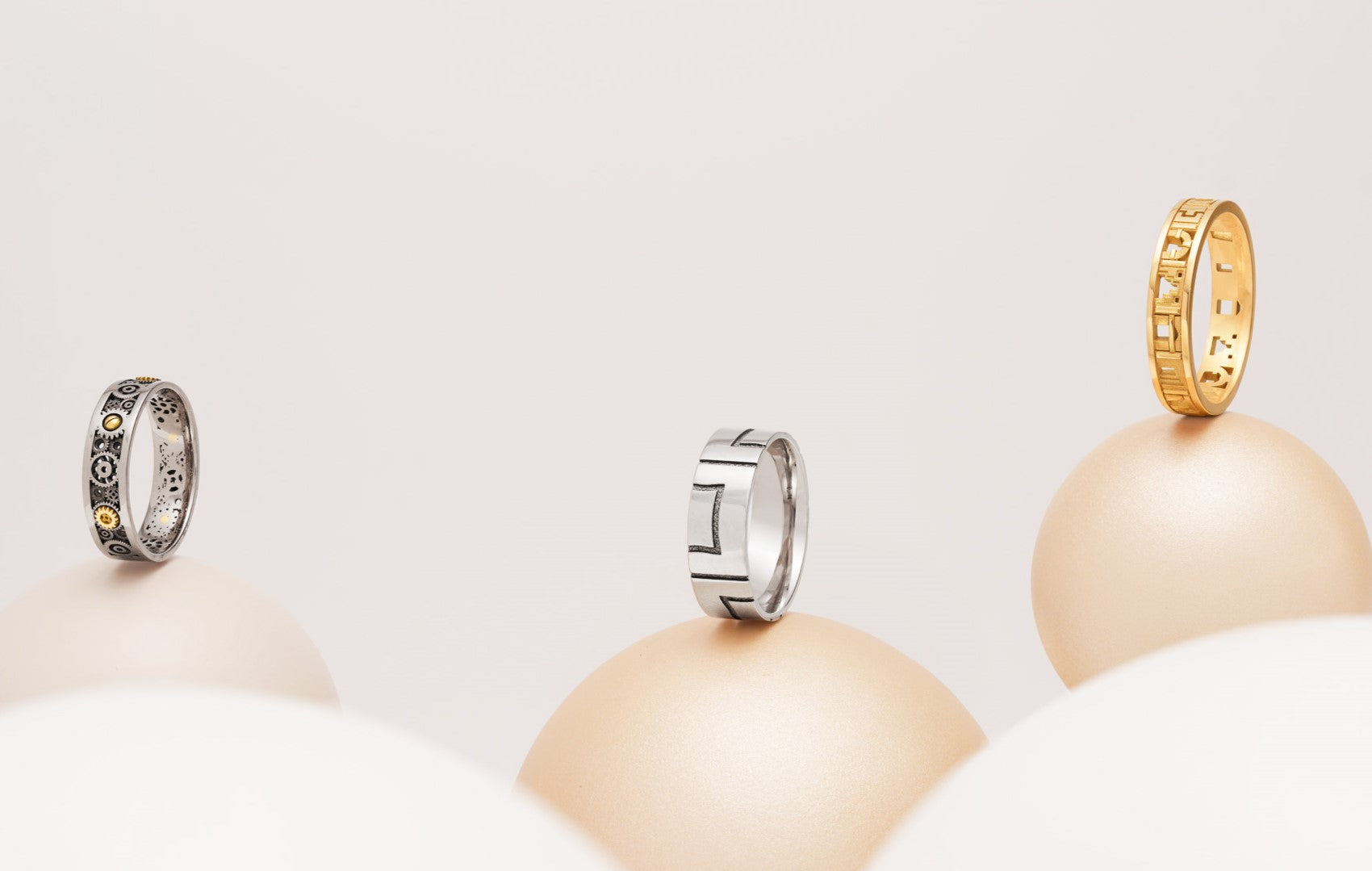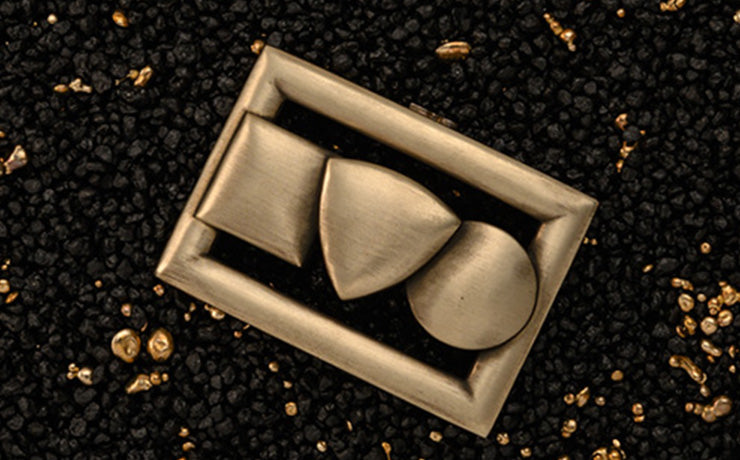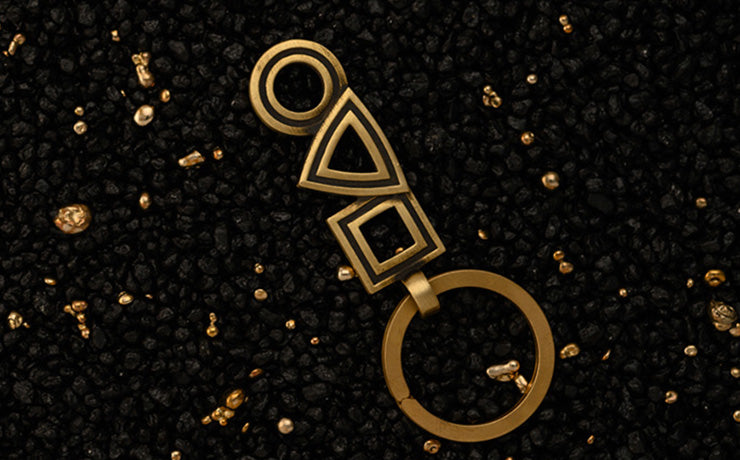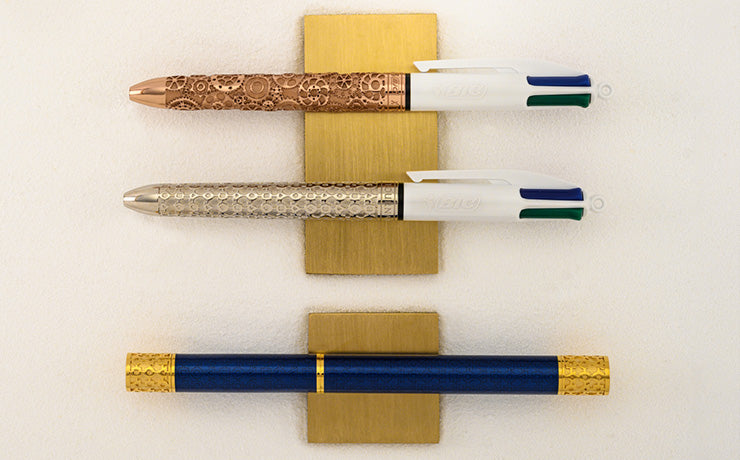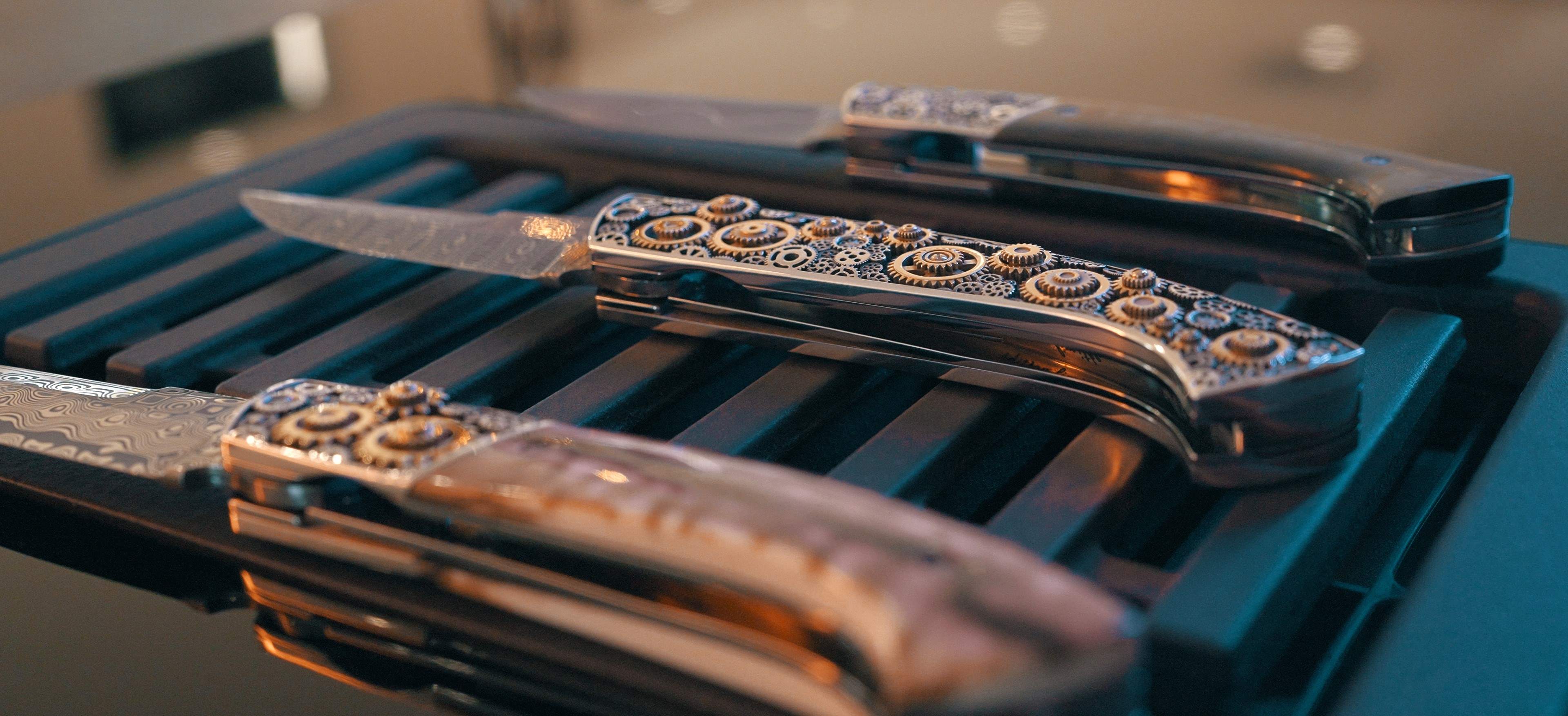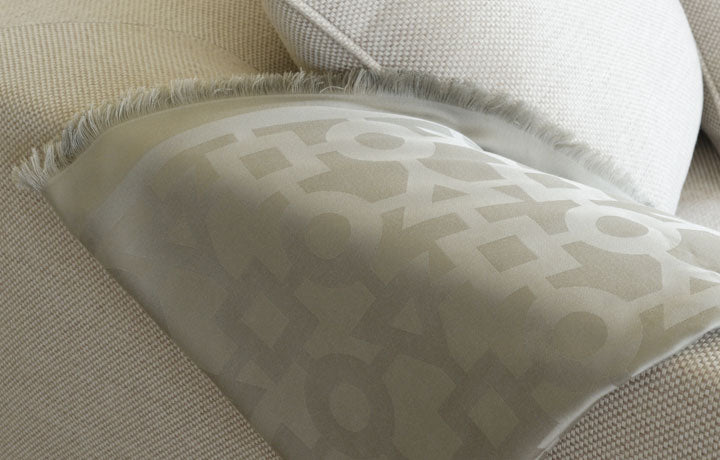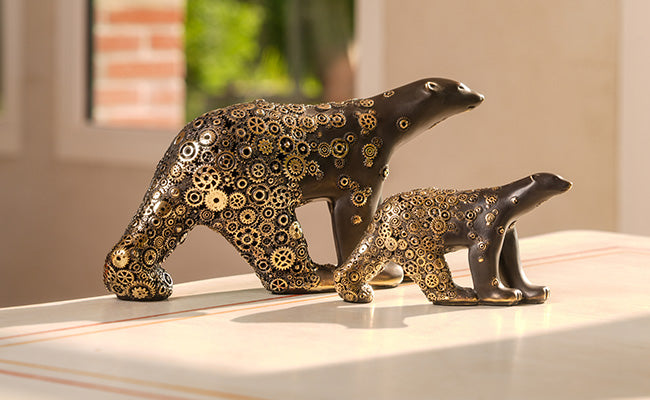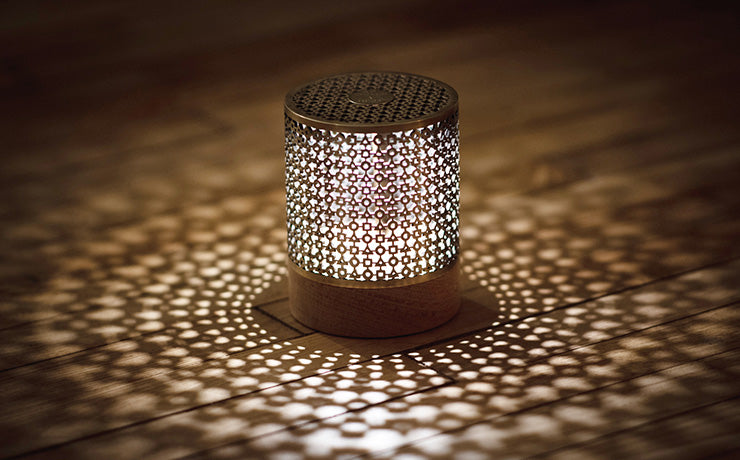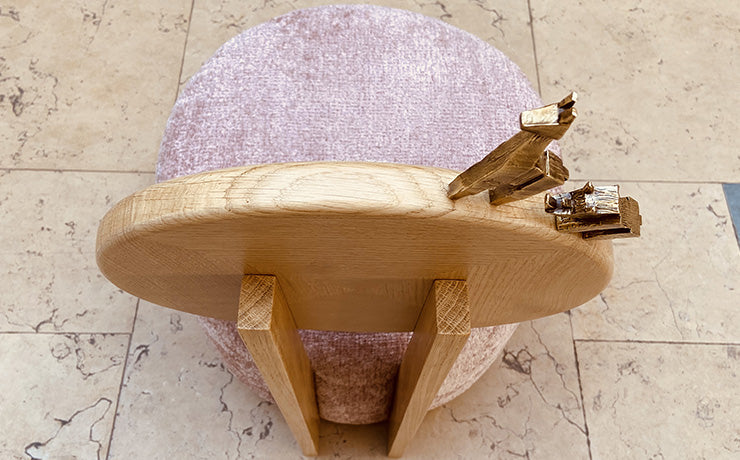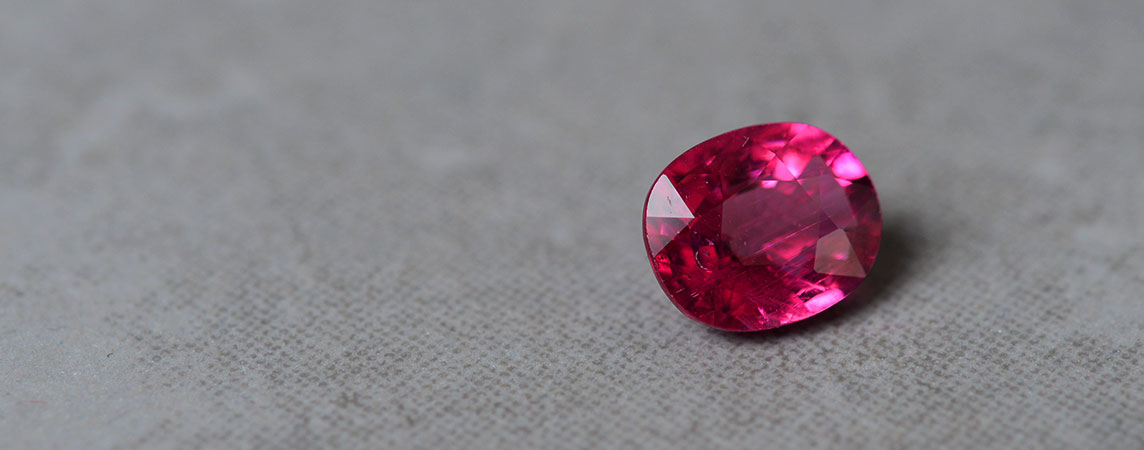
LA TOURMALINE
La toumaline
For thousands of years, tourmaline has been drawing us into a whirlwind of rainbow-like colors. Similar to many gems in its range of colors, tourmaline is nonetheless unique.
La toumaline nous permet bien souvent de la découvrir dans des teintes et des concentrations de couleurs inattendues, le tout dans un même cristal et parfois même elle nous dévoile sa magie, en laissant apparaître un œil de chat ! La tourmaline englobe un groupe de minéraux pleins de surprises, qui partagent la même structure cristalline mais qui se distinguent de par leurs propriétés chimiques et physiques. Une fois de plus, on constate que la nature compte bien des trésors : une même gemme peut se décliner sous mille et un visages, selon les éléments qui la composent.
Technical details of a large, colorful family
Les tourmalines sont des silicates : c’est à dire composées principalement de silice combinée à divers oxydes métalliques. La diversité de ces dits éléments confère à ces gemmes atypiques l’originalité de présenter un dégradé de couleurs. Rares sont les tourmalines intégralement monochromes ! Structure cristalline : un cristal de tourmaline est un prisme tout en longueur, dont la section prend la forme d’un triangle aux extrémités arrondies. Les tourmalines à l’état brut présentent aussi des stries verticales à la surface. Dureté : sur l’échelle de Mohs allant de 1 à 10 (1 pour le savon sec et 10 pour le diamant), la tourmaline oscille entre 7 et 7,5, ce qui lui prodigue une bonne résistance aux rayures. Conseils d’entretien : on privilégie le nettoyage avec un chiffon doux, du savon et de l’eau tiède.
Treatments : Like many gems, tourmalines are often heated or irradiated, neither of which alters the fact that they are natural. Heating helps to attenuate hues that are too pronounced or unevenly distributed. A very dark green can become a brilliant green, for example. There is also irradiation treatment, which can transform a stone that is too pale into a gem with vibrant, intense colors. In this way, a bland pink can be transformed into a sparkling pink-red. Heating and irradiation are the most common treatments for tourmalines, sometimes carried out by nature itself. These are common, undetectable processes that give tourmaline the opportunity to reveal itself in a more beautiful, sparkling light, carrying us away in its innumerable spirals of ever brighter colors!
The different spirals of a colorful tourmaline swirl
Many terms exist to designate this or that type of tourmaline, depending on its dominant color, the intensity, distribution or plurality of its hues, or the phenomenon created by its inclusions. The five most widely used and coveted varieties on the Jewellery market are:
- la rubellite: cette tourmaline est de couleur rose-rouge intense liée à la présence d’un élément chimique appelé manganèse. Les professionnels ont du mal à s’entendre sur la définition exacte de la couleur caractéristique d’une rubellite. Il est cependant clair qu’une tourmaline ne peut être considérée comme telle si son rose est trop pâle ou son rouge trop sombre : la rubellite reste une gemme de couleur rose à rouge vif, la teinte la plus prisée étant celle s’apparentant à un rubis fuchsia pétillant. Parfois taillée en cabochon comme sur le pendentif Gourmandise du créateur Philippe Tournaire, elle suscite le désir et la convoitise…Sa couleur rappelle celle des bonbons, on en mangerait presque ! Voici une jolie anecdote concernant cette tourmaline-friandise : en 1978, une découverte sans précédent marqua pour toujours l’histoire de la rubellite. En effet, c’est dans l’Etat du Minas Gerais au Brésil, plus précisément dans la mine de Jonas, que des mineurs ont mis la main sur un trésor de rubellite encore jamais égalé : des centaines de kilos de rubellites de qualité joaillière enfouies dans la roche ! Cet événement qui a fait le tour du monde est connu sous le nom de « bamburrio », qui signifie jackpot. Il faut dire qu’avant de découvrir cette merveille, les mineurs découragés par leurs recherches infructueuses de 6 mois ne croyaient plus au miracle ! Encore une belle leçon de persévérance pour atteindre ce qui semble inaccessible !
- la tourmaline Paraiba : découverte en 1989 dans l’Etat du Paraiba au Brésil, sa couleur va du bleu électrique, parfois appelé « bleu-néon » jusqu’au vert fluo. Cette gemme doit en grande partie sa couleur vibrante à la combinaison du cuivre et du manganèse. Cette association peu commune d’éléments chimiques lui est propre et permet aux scientifiques de l’identifier, outre sa couleur sans pareil. Elle est la plus prisée de toutes les tourmalines et celle qui atteint les prix les plus fous. Sa couleur intense, sa rareté y sont pour beaucoup. Les amateurs de Paraiba mettent l’accent sur sa couleur et non son poids. Il est peu fréquent de rencontrer une tourmaline digne de ce nom dont le poids excède 2 carats ! Depuis cette découverte au Brésil, d’autres gisements sont apparus au Nigeria en Afrique en 2001, avec des tourmalines aux couleurs proches de la Paraiba, contenant elles aussi cuivre et manganèse. Cette tourmaline étant la gemme éponyme de l’Etat de Paraiba, il est délicat de parler de tourmaline « Paraiba » lorsque celle-ci ne provient pas de la dite région brésilienne. Il est aussi parfois compliqué d’affirmer l’origine de la dite gemme car au Brésil comme en Afrique, elle a les mêmes propriétés chimiques.
- la tourmaline chromifère : connue depuis les années 1960, sa couleur va d’un vert intense teinté de bleu à un vert intense légèrement teinté de jaune. Tout comme les émeraudes brésiliennes, la plupart des tourmalines chromifères doivent leur couleur en grande partie à l’élément chimique appelé vanadium. Cette gemme provient essentiellement de Tanzanie et du Kenya. La tourmaline verte de couleur moins intense est généralement appelée verdelite et englobe toutes les nuances de vert dues à la présence du fer.
- indicolite or indigolite: this term is used to designate blue tourmalines, in which iron is also very present. Most of these green- and blue-toned tourmalines need to be of a certain size to show an intense color, which is not the case with chromiferous tourmalines and Paraiba, which have the ability to combine both small size and vibrant color. Blue and green tourmalines are mainly sourced from Brazil, the USA, Afghanistan and Africa.
- la tourmaline multicolore et melon d’eau : il arrive fréquemment que plusieurs couleurs se distinguent le long d’un cristal de tourmaline. Ce phénomène s’explique par les changements de concentration des éléments chimiques, lors de la formation de la gemme. Un exemple troublant est celui de la tourmaline « melon d’eau », communément coupée en tranche, telle une pastèque : le cœur du cristal est rose-rouge, la couche supérieure jaune-blanche et la bordure est verte…Exactement comme le fruit ! Outre ces cinq variétés réputées, on peut aussi évoquer le schörl et l’œil de chat, tourmalines atypiques, l’une de par son noir intense et l’autre étant une pierre à énigmes… La tourmaline schörl désigne les tourmalines noires dans leur globalité. Longtemps utilisée en joaillerie de deuil, cette gemme riche en fer est présente dans de nombreux pays…Nul besoin de chercher très loin, on en trouve dans les monts du Forez, région du créateur joaillier Philippe Tournaire ! Aussi existe-t-il un phénomène intrigant, celui de la tourmaline chatoyante. Un œil de chat se dessine alors sur une tourmaline taillée en cabochon. Ceci est dû à un groupe de larges inclusions en forme de tubes, parallèles les uns aux autres, qui une fois mis en lumière par le lapidaire donnent lieu à ce type de particularité. L’œil de chat d’une tourmaline est souvent plus large et trouble que sur d’autres gemmes énigmatiques telles que le chrysobéryl chatoyant par exemple.
Provenance of this infinitely colored gem...
Qu’elles soient incolores, noires, roses, bleues, vertes, jaunes…Les tourmalines tourbillonnent autour de nous à travers le monde. Tout comme l’Australie constitue le berceau de l’opale, le Brésil constitue celui de la tourmaline. En particulier l’Etat de Minas Gerais qui est considéré comme le plus grand producteur de tourmalines de toutes couleurs et ceci à l’échelle internationale. Viennent ensuite l’Afrique, l’Asie et les Etats-Unis. Bien sûr d’autres gisements existent, ceux énumérés ci-dessus étant les principaux. La tourmaline est l’une des familles de gemmes offrant la plus grande variété de couleurs.Tant de combinaisons, de nuances, de tons reflètent la richesse dont la nature regorge ! Surprenante harmonie de couleurs que peut dévoiler une seule et même pierre ! Lorsque les tourmalines sont vives et leur éclat pétillant, Philippe Tournaire aime les utiliser pour ses créations de bijoux, les sublimant ainsi en les associant à d’autres merveilles telles que saphirs, diamants…Et la magie du désordre organisé opère…La tornade tourmaline emporte toutes les couleurs du monde sur son passage et nous donne envie d’être du voyage !
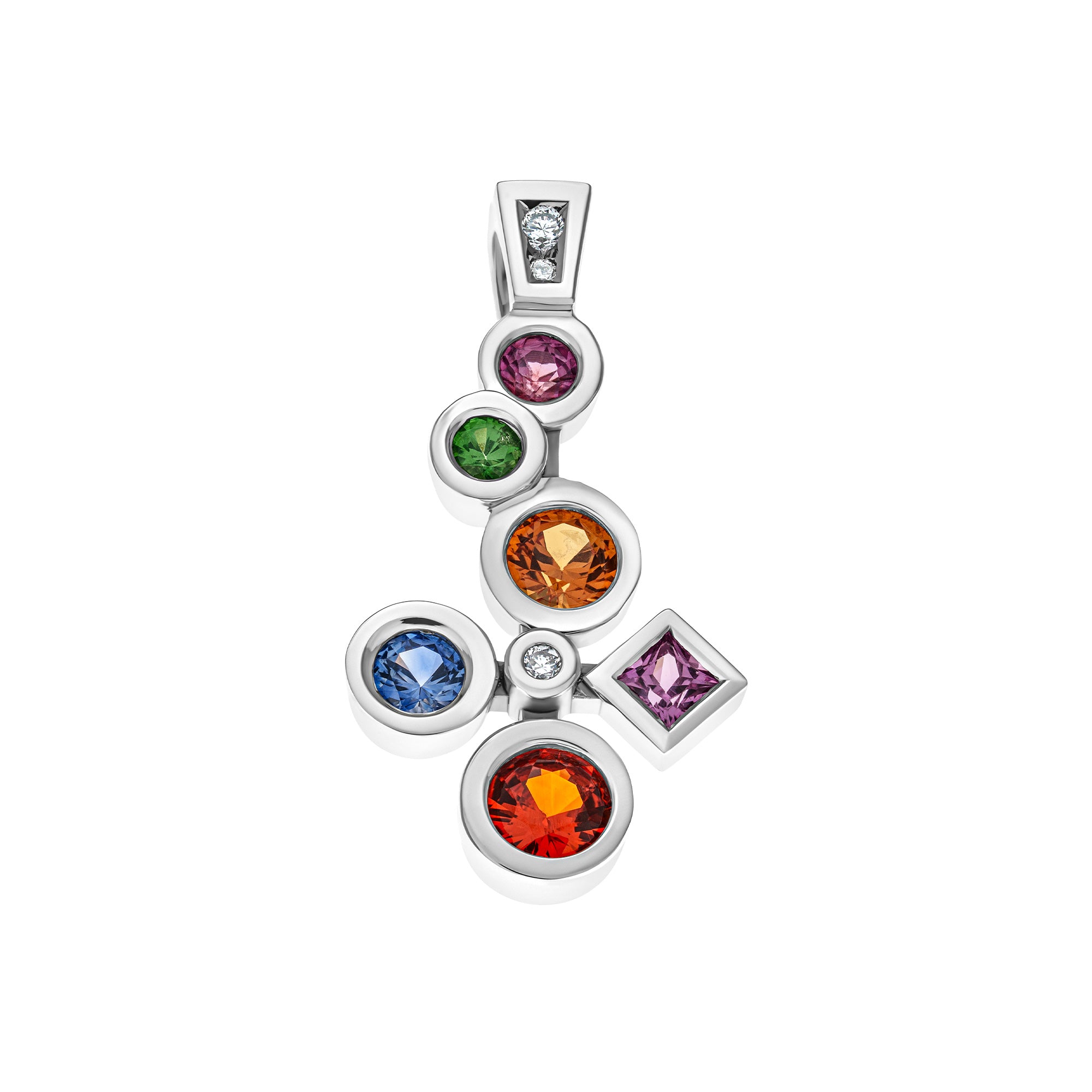
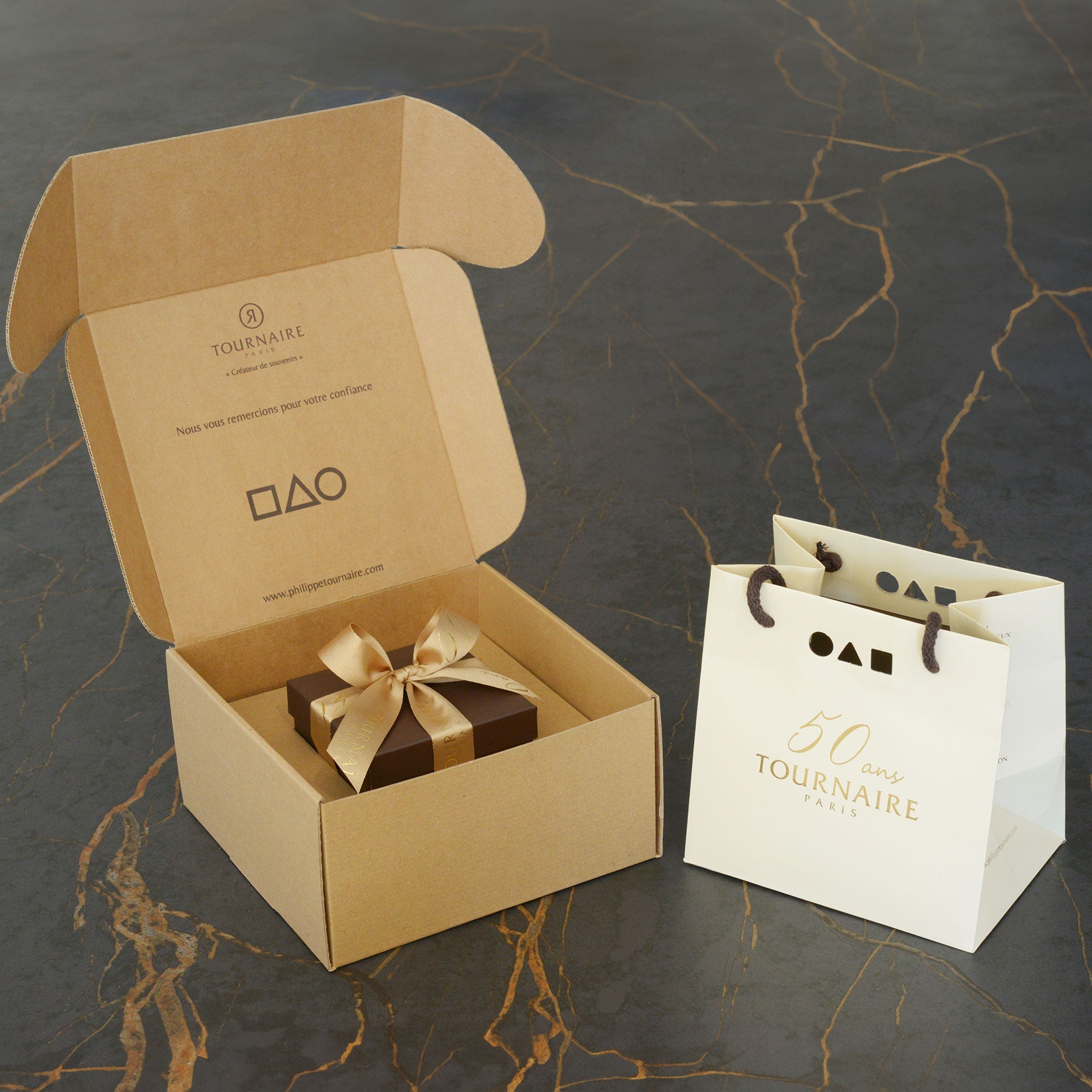
The guarantee of uncompromising craftsmanship
Our titles and labels




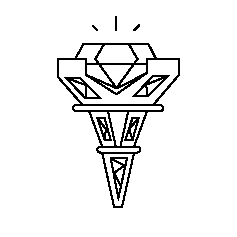
Made in France
Made in our workshop

100% secure payment
3x free of charge possible

Free delivery & returns
100% secure and free

Jewellery committed
Ethical and responsible jewelry

